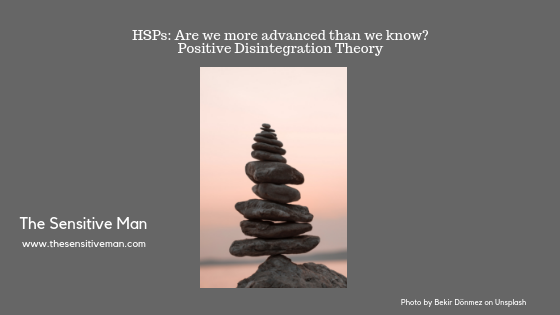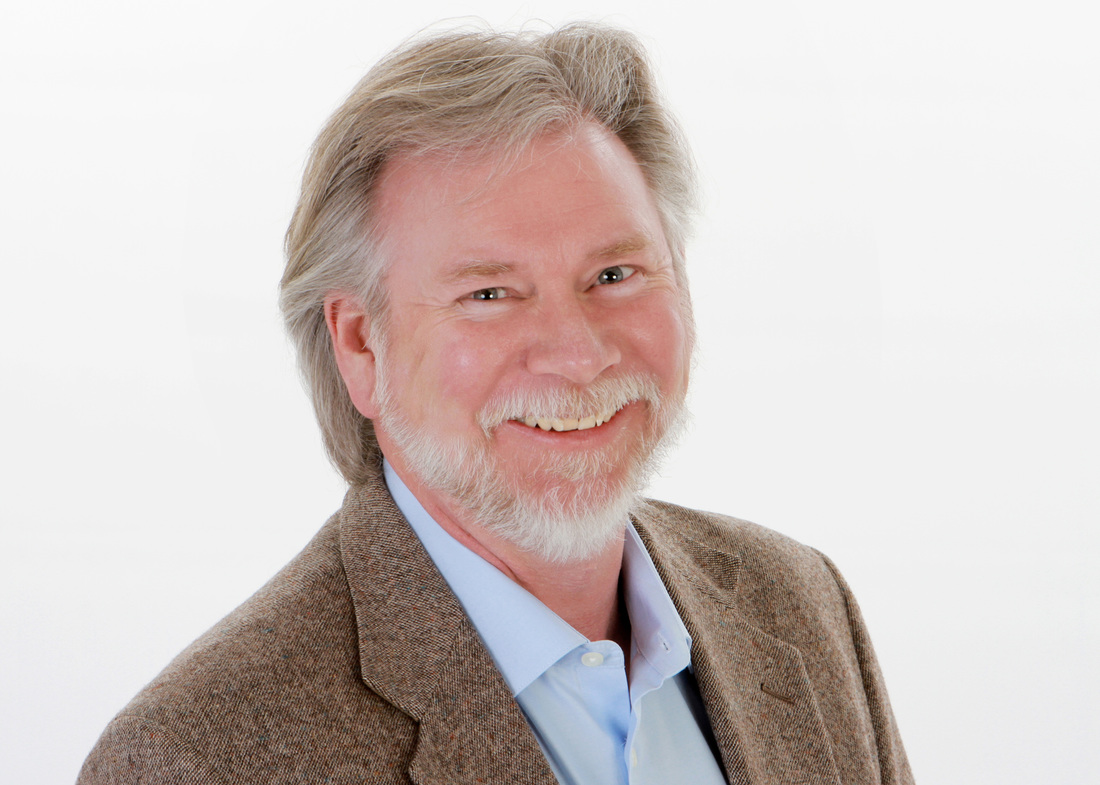The Sensitive Man - HSPs: Are we more advanced than we know? Positive Disintegration Theory1/6/2019 A Blog about Sensory Processing Sensitivity from the Worldview of a High Sensing Male
Luke: All right, I'll give it a try. Yoda: No. Try not. Do... or do not. There is no try. From Star Wars: The Empire Strikes Back In the early sixties, Polish psychiatrist, Kazimierz Dabrowski developed a personality development theory called Positive Disintegration. Positive Disintegration Theory postulates a personality development framework that emphasizes personality evolution via overexcitability (OE) crises of the individual , which amounts to a heightened experience of stimulus via increased neuronal sensitivities. This experience places the individual into crisis situations which expands the boundaries of personality and allows for growth. Individuals progress through levels of development spurred by these existential sensory excitements, eventually achieving a creative, altruistic state that optimizes human potential. It would seem a perfect developmental model for Highly Sensitive People, with our highly sensitive natures. We are well equipped to experience these catalysts for growth that could lead us to become highly advanced personalities per this model. But would our unique personality characteristics make us better designed to evolve to a higher level of human personality, and if so, for what purpose? Let’s look at the theory. Some of the main tenets of the theory are: 1) tension and anxiety are necessary for personal growth, 2) personality is not innate but must be learned, 3) developmental potential (DP), a key component and is a result of the overexcitability (OE) factor as well as the drive for autonomy, 4) the disintegration component refers to the breakdown of our primary integration, which is a more reptilian early life personality focused on selfish drives and survival. This basic personality is formed as a result of primal instincts and socialization and must dissolve for developmental growth to occur. Emotional reactions cause the development of individual values, different and individuated from the societal norms. Decisions are then made about the individual essence (which I read as the core of the person) and then existential choices then allow expression of the higher self and inhibition of the lower self as measured against these new found values. The levels of development occur along five stages. The developmental potential for each individual derives from various genetic features expressed through interaction with the environment. Through various mechanisms including overexcitability (OE), specific abilities and talents and a strong desire for autonomous growth this potential is realized. There are five aspects to (OE) they include: psychomotor (excessive physical energy, impulsivity), sensual (expression through the senses), imaginational (visualization in the mind), intellectual (voracious learners) and emotional (empathy). For those with high levels of OE, such as would be expected for HSPs, the road to development is not an easy one. Many highs and lows make navigating through development difficult. People with high developmental potential have a strong compulsion to work through and walk their own path. I find that in my contacts with HSPs this seems to be a common theme. Dabrowski describes five levels of development. As mentioned before we all start at the same place at the primary integration level. Many people stay at this level their whole lives, never advancing, focusing on self-centered objectives and survival strategies at all costs. This has nothing to do with intelligence. It is about the emotional development of the individual. Many intelligent, powerful people stay locked here. Their success predicated on fulfilling their basest desires. Others live here to follow and conform, never fully developing a strong sense of self. There is great social and peer pressure to conform here, a robotic and rote existence. The next level, Unilevel Disintegration, occurs as a result of brief periods of crisis, followed by existential despair and then transformation. An example might be adolescence, financial crisis, or the death of a loved one. Generally, these crises are horizontal – right/wrong, forward/backward types of decisions. This is a transitional stage. Many people pass through this level, as life does present many challenges. However, the transition does elude some, and they regress back to Level One, an easier state of being. Those that utilize the opportunity grow and begin to see the formation of individual values and beliefs. At the third level, named Spontaneous Multilevel Disintegration, many either progress or regress back to lower levels. The key question is, “Do I follow my instincts, my teachings or my heart?” Following the heart is the realization of the awakening of the third level. Relying on personal values developed over the previous stages and individual and unique perspectives, allow for breaking the mold and standing alone. This is a vertical choice level, involving many options spanning over many disparate levels, much like three-dimensional chess. There is an expansion of thinking outside of the box, exercising the individuals own beliefs and values. This level is a gateway to higher levels for those that embrace the work. Many never move beyond, and some even regress, even fewer move forward. Level Four is called Directed Multilevel Disintegration. The process of disintegration of the primary integration continues. At this level, more conscious and deliberate choices are made by the individual. The growth becomes centered externally, seeing beyond self and taking a more prosocial stance. It is a movement towards mammalian thinking--what is good for the herd, what is good for the group. More empathy, and more expansion. The individual begins to think in terms of what is the right thing to do, over more selfish interests. Finally at Level Five comes the Secondary Integration and is guided by conscious choices based on personal values. Shedding the primary integration, the individual awakens to their potential as a fully functioning human. Now distinct and separate from simply surviving and self-centered obsessiveness or obligation to conform to a societal norm that no longer seems relevant, the person is free to exercise free will. Choices are now made on the personal values honed over the various levels. True creativity, originality and a higher level of being occurs at this level. At this level, the primary integration is replaced by the unique integration of the individual. How do HSPs fit into this developmental model? At what level do HSPs seem to gravitate? Do we experience OE more often than most non-HSPs and does this move us forward in development faster than others? This seems to make sense considering our innate sensory sensitivities and our capacity for deep, reflective processing. With the exception that some HSPs might find retreating to a lower level more comfortable, albeit for temporary rest and reflection. We as a group would largely move forward without much conscious effort. We clearly process more emotional crises than others, because we feel more deeply – pulling in intuitive as well as sensory data. Pushing boundaries should be something all HSPs are encouraged to do, for this is the place where crisis meets learning opportunity and growth ensues. Most of the individuals that Dabrowski studied to develop this theory were at their peak, creatively and spiritually. Level Five sounds a lot like a high functioning HSP and could represent a good model for HSPs to adopt. Do the various levels equate in some way to various spiritual levels? The qualities of each level would suggest traveling from base instincts to a more altruistic and spiritual peak at Level Five. Could that mean that HSPs would then be more prone to being spiritually “enlightened?” It would seem so, but only for the ones that push forward, rising above the crises of life, learning, retaining, discovering the value of their own unique personality. Yet, can we break free of our obsessiveness with OE and fully see that crisis as a tool for higher evolvement? To face head-on existential moments in life with confidence that in spite of the pain moves us to higher levels of being human. With that, I believe we can live our lives with our full potential and help the planet evolve. It’s an interesting thought and an even more interesting theory. Yoda: Yes, run! Yes, a Jedi's strength flows from the Force. But beware of the dark side. Anger, fear, aggression; the dark side of the Force are they. Easily they flow, quick to join you in a fight. If once you start down the dark path, forever will it dominate your destiny, consume you it will, as it did Obi-Wan's apprentice. Luke: Vader... Is the dark side stronger? Yoda: No, no, no. Quicker, easier, more seductive. Luke: But how am I to know the good side from the bad? Yoda: You will know... when you are calm, at peace, passive. A Jedi uses the Force for knowledge and defense, NEVER for attack. Luke: But tell me why I can't... Yoda: No, no! There is no "why". From Star Wars: The Empire Strikes Back References:
0 Comments
Leave a Reply. |
AuthorBill Allen currently lives in Bend, Oregon. He is a certified hypnotist and brain training coach at BrainPilots.com. He believes that male sensitivity is not so rare, but it can be confounding for most males living in a culture of masculine insensitivity which teaches boys and men to disconnect from their feelings and emotions. His intent is to use this blog to chronicle his personal journey and share with others. Archives
July 2024
Categories
All
|


 RSS Feed
RSS Feed
